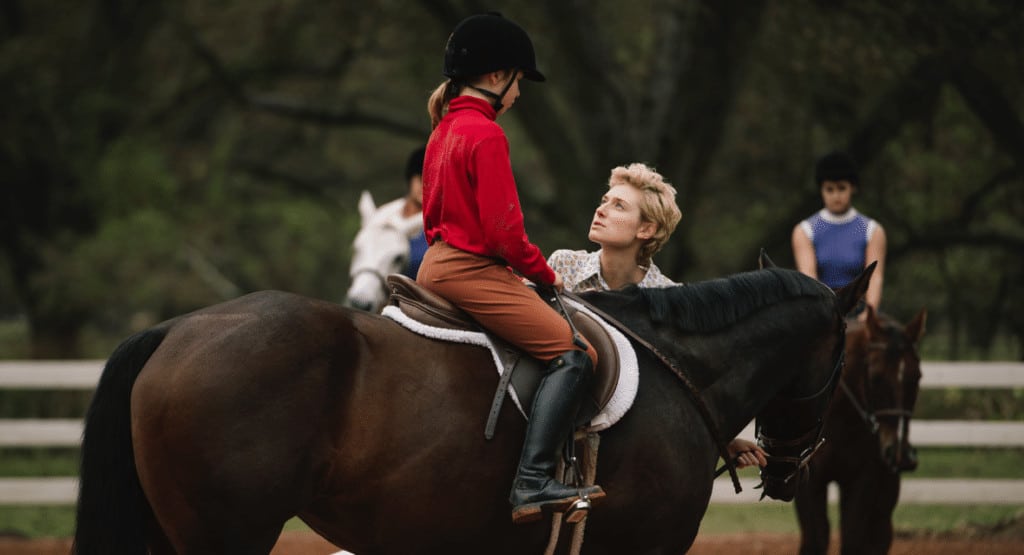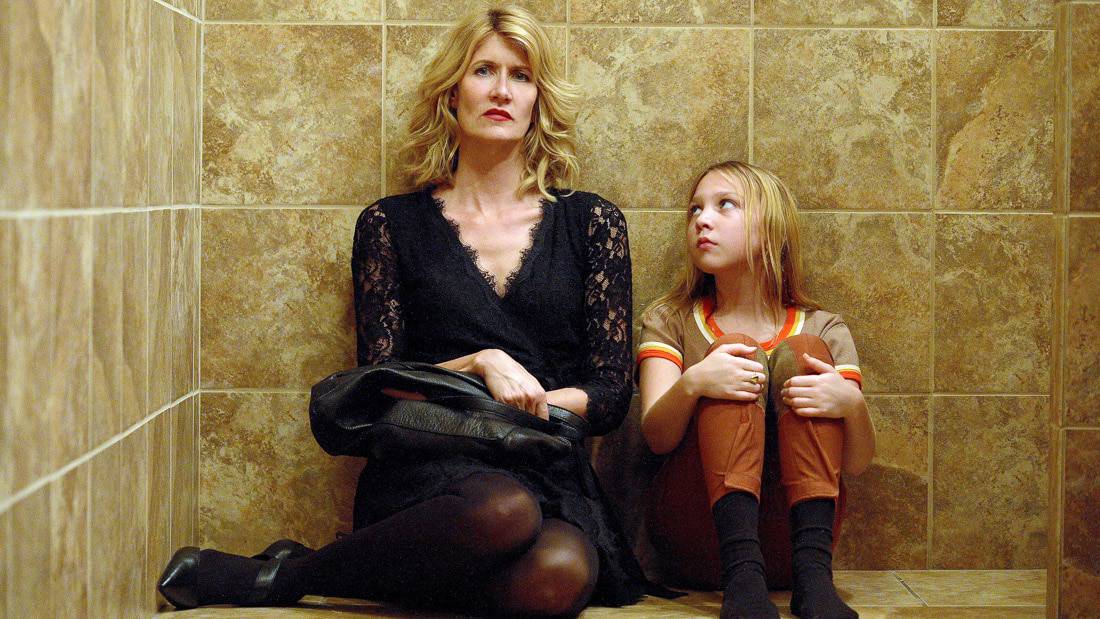
Movies based on true stories have been common since filmmaking began, but none are as personal and literary as Jennifer Fox‘s The Tale. Fox uses the act of writing and filmmaking as a way of remembering a traumatic event in her own life, which is what many authors do in the genre of creative nonfiction. Tactics of literary nonfiction are certainly at works in The Tale as Fox tells her story of remembering that past in the medium of dramatic film.
The Tale, which stars Laura Dern as the fictionalized Jennifer Fox, is about her first sexual experience at age 13, which she had thought to have been beautiful. As she begins to uncover details, by talking to those who witnessed her intimate relationships with her equestrian coach Mrs. G (Elizabeth Debicki) and trainer Bill (Jason Ritter), she begins to realize that not everything was as she remembers it.
Creative nonfiction is a relatively new genre in literature compared to fiction or poetry, even though techniques employed by Fox in her movie have been used by ancient writers like Seneca and Michel de Montaigne. The genre applies devices and styles associated with fiction to tell factual narratives, unlike traditional journalism and other nonliterary nonfiction. When looking at true stories from the mindset of an author, writers must approach memories, the truth, and friends or family in their stories differently.
Memory is a trickster, varying from one individual to the next and changing over time. Our minds can create false memories to fill in the gaps in what we cannot remember or what others have recollected to us. When people write personal nonfiction stories, they struggle with mining those memories and weaving them into a coherent piece. They approach memories in blips, fragments, and specific senses, which Virginia Woolf described as “moments of being.” They are the details that remain after the entirety of an event has become foggy, like a clear image of your mother’s face, worried, but you don’t remember why.
Fox depicts this struggle beautifully, depicting specific images she remembers, small moments that can’t reveal the entire truth of her experience until she pieces them together. Flashbacks to young Jennifer (Isabelle Nélisse) show some of the concrete details similar to what Woolf refers to. Moments such as when the 13-year-old girl is riding her horse and Mrs. G and Bill are coaching her riding stance from the fence are not menacing without the context of the trio’s relationship, and these are what Jennifer’s mind has chosen to remember because of that.
What becomes apparent when we write these “moments of being” is that they don’t line up perfectly square and sometimes they don’t fit together at all. Sadly, that’s one of the downfalls of memory, it can be a myth. Jennifer finds this with her mother, Nettie (Ellen Burstyn), who has found and read a short story written by her daughter as a school assignment decades ago. Nettie interprets Jennifer’s tale of her relationship with Mrs. G and Bill to be molestation. But Jennifer initially disagrees. Her cohesive picture of the relationships become clearer, though, as she talks to others who knew Mrs. G and Bill, triggering more memories of that time.
Jennifer’s experience with her memory shouldn’t be and is not dismissed as being completely untrue. Author John Kotre (“White Gloves: How We Create Ourselves Through Memory”) says, “A myth is not a falsehood but a comprehensive view of reality. It’s a story that speaks to the heart as well as the mind, seeking to generate conviction about what it thinks is true.” Fox does this by showing flashbacks first as Jennifer remembers them. At the start of the film, Jennifer recalls being more grown and mature. Another young actress (Jessica Sarah Flaum) appears in the scenes until Nettie points out she is how Jennifer looked at fifteen, not thirteen. Afterward, Nélisse takes over the role and the same scenes are replayed with her in the part.

Another nonfiction aspect of The Tale is the use of splitting Jennifer into two — her younger self who is experiencing all of the events and the older Jennifer who is putting them together through memories. In nonfiction, those are two different voices. Sentence structure is different or the adjectives are different because they are two opposing authors. The adult Jennifer asks the young Mrs. G and Bill questions about the past in a daydream she has, and this is her attempts to understand her time with Mrs. G and Bill in her adult voice. She employs those two different selves in order to examine her experience as she was then and how she is now.
That is even more essential when trauma is involved. There is a splitting in the mind from the trauma that a person experiences. We see that in the film continually, especially in the flashbacks that have a different tone than the rest of the film. They take on the young Jennifer’s point of view just as a writer would transcribe a memory through the voice of their younger self.
Jennifer also examines another part of herself — the self that never would have had experienced trauma by comparing her first sexual experience to those of her students. Just as she interviews young Mrs. G and Bill as adult Jennifer, she interviews her younger self in an attempt to prevent what she knows will happen. Young Jennifer speaks back to her, in a completely different mindset than the grown woman staring back at her in the mirror. They might as well be entirely different characters.
The discovery of her experience then breeds a new self, one that inhibits both memories and begins to understand them, as Jennifer does at the end of the movie. This isn’t a happy ending, but an overwhelming emotional reckoning. That ending is in tune with any memoir that deals with trauma because the central conflict is the searching for the truth, which Jennifer finds in the end.
The Tale is in every sense a memoir, telling a personal experience in the form of a drama by using the storytelling techniques of fiction film. Creative nonfiction does the same thing, using literary techniques associated with fictional writing to tell a true story. In telling a story in this way, it connects to the audience differently than traditional nonfiction film like a documentary. The prime purpose of writing nonfiction is to help make sense of a memory, but the prime purpose in sharing it is to understand a larger issue that plagues not just the writer, but the audience as well.
Just as any nonfiction writing would, The Tale addresses sexual abuse and the trauma that follows, using personal experience to express the emotions and feelings numerous victims go through as well. The literary nonfiction elements of Jennifer Fox’s movie are what make it such a special film, especially one dealing with sexual abuse. It feels like the first of its kind and we hope to see more writers and directors employ nonfiction techniques to tell a story.
Related Topics: HBO, jennifer fox

